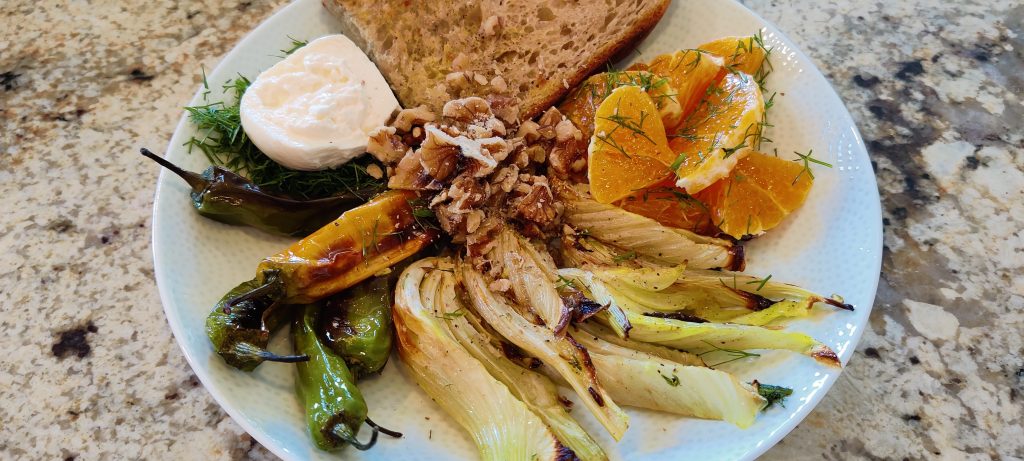Best and Worst Oils and How To Use Them

When it comes to cooking, not all oils are created equal. Some oils offer fantastic health benefits, while others can negatively impact your well-being. Knowing which oils to use and how to use them can make a big difference in your overall health. Let’s dive into the best and worst oils for you and how you can incorporate them into your cooking!
When comparing oils to use, look for oils high in monounsaturated fats and omega-3 fatty acids. Here’s a more detailed breakdown of what to look for and what to avoid, as well as other factors to consider when comparing oils.
What to Look For
- High in Monounsaturated Fats
- Oils rich in monounsaturated fats are beneficial for heart health. These fats can help lower bad cholesterol levels and reduce the risk of heart disease.
- Examples: Olive oil, avocado oil, and canola oil.
- High in Omega-3 Fatty Acids
- Omega-3 fatty acids are anti-inflammatory and beneficial for heart and brain health.
- Examples: Flaxseed oil, walnut oil, and canola oil.
- Low in Saturated Fats
- While some saturated fats are not necessarily bad, it’s generally better to choose oils lower in saturated fats to maintain heart health.
- Examples: Olive oil and canola oil.
- Unrefined or Cold-Pressed
- Unrefined or cold-pressed oils retain more nutrients and antioxidants compared to highly processed oils.
- Examples: Extra virgin olive oil, cold-pressed avocado oil.
- Organic or Non-GMO
- Choosing organic or non-GMO oils can be important for those concerned about pesticide residues and genetically modified organisms.
- Examples: Organic extra virgin olive oil, non-GMO canola oil.
What to Avoid
- High in Omega-6 Fatty Acids
- While omega-6 fatty acids are essential, a diet excessively high in them can promote inflammation if not balanced with omega-3 intake.
- Examples: Corn oil, soybean oil, sunflower oil, and vegetable oil blends.
- Highly Processed and Refined Oils
- Highly refined oils can lose their nutritional value and may contain trans fats.
- Examples: Refined canola oil, refined vegetable oils.
- Partially Hydrogenated Oils (Trans Fats)
- These are linked to increased risk of heart disease and should be avoided entirely.
- Examples: Some margarines, processed snack foods, and certain baked goods.
Other Factors to Consider
- Smoke Point
- The smoke point is the temperature at which oil starts to smoke and break down, producing harmful compounds. Choose oils with higher smoke points for high-heat cooking.
- High Smoke Point Examples: Avocado oil, peanut oil, canola oil.
- Low Smoke Point Examples: Flaxseed oil, extra virgin olive oil (best for low-heat cooking or cold applications).
- Flavor
- Some oils have distinct flavors that can enhance or overpower your dish. Consider the flavor profile when selecting oil for specific recipes.
- Strong Flavor Examples: Extra virgin olive oil, sesame oil, walnut oil.
- Neutral Flavor Examples: Canola oil, sunflower oil, grapeseed oil.
- Nutrient Content
- Oils can be a source of important vitamins and antioxidants, such as vitamin E.
- Nutrient-Rich Examples: Extra virgin olive oil, avocado oil, wheat germ oil.

The Best Oils for Health
1. Extra Virgin Olive Oil
- Benefits: Rich in monounsaturated fats, antioxidants, and anti-inflammatory properties.
- Usage: Perfect for drizzling over salads, roasted vegetables, and for low-heat cooking. Try it in this Farro, Grape and Celery Salad recipe for a burst of flavor.
- Price Range: $10-$25 per liter
2. Avocado Oil
- Benefits: High in monounsaturated fats and vitamin E, with a high smoke point.
- Usage: Ideal for high-heat cooking like frying and grilling.
- Price Range: $15-$30 per liter
3. Coconut Oil
- Benefits: Contains medium-chain triglycerides (MCTs), which may support metabolism and energy levels.
- Usage: Best for baking, medium-heat cooking, and as a dairy-free alternative in recipes. Use it in these Coconut Banana Oatmeal Muffins.
- Price Range: $8-$20 per liter
4. Flaxseed Oil
- Benefits: High in omega-3 fatty acids, which are beneficial for heart health and reducing inflammation.
- Usage: Best used in cold applications like smoothies, dressings, and drizzling over finished dishes. Add it to your morning green smoothie for an omega-3 boost.
- Price Range: $10-$25 per liter
5. Walnut Oil
- Benefits: Also rich in omega-3 fatty acids, with a distinct nutty flavor.
- Usage: Ideal for cold dishes, salads, and finishing dishes. Try it in this a Walnut Oil Vinaigrette in this Roasted Fennel, Shishito Pepper, Orange, and Burrata Salad recipe.
- Price Range: $15-$30 per liter

The Worst Oils for Health
1. Partially Hydrogenated Oils (Trans Fats)
- Risks: Linked to increased risk of heart disease, inflammation, and bad cholesterol levels.
- Usage: Avoid entirely. These are often found in processed foods, baked goods, and margarine.
2. Palm Oil
- Risks: High in saturated fats and linked to deforestation and environmental concerns.
- Usage: Commonly found in processed foods. Try to limit or avoid.
3. Soybean Oil
- Risks: High in omega-6 fatty acids, which can contribute to inflammation if consumed in excess.
- Usage: Widely used in processed and fast foods. Limit intake and opt for healthier alternatives.
- Price Range: $2-$8 per liter
4. Corn Oil
- Risks: Also high in omega-6 fatty acids and often derived from genetically modified crops.
- Usage: Frequently used in processed foods and for frying. Opt for oils with better fat profiles.
- Price Range: $3-$10 per liter
5. Vegetable Oil
- Risks: Often a blend of various oils, typically high in omega-6 fatty acids, which can promote inflammation if consumed in excess.
- Usage: Commonly used for frying, baking, and in processed foods. Limit intake and opt for oils with healthier fat profiles.
- Price Range: $2-$7 per liter

Oils in the Middle
There are many types of oils available for use. Now that we know some of the best and the worst, there are a few common oils you typically find in the grocery store that fall somewhere in the middle of both healthy and unhealthy.
Canola Oil
- Benefits: High in monounsaturated fats, contains omega-3 and omega-6 fatty acids.
- Risks: Often highly processed, may contain trans fats, high in omega-6.
- Usage: Suitable for high-heat cooking and baking.
- Price Range: $2-$6 per liter
Sunflower Oil
- Benefits: High in vitamin E.
- Risks: High in omega-6 fatty acids.
- Usage: Good for high-heat cooking.
- Price Range: $3-$8 per liter
Peanut Oil
- Benefits: High in monounsaturated fats, high smoke point.
- Risks: High in omega-6 fatty acids, potential allergen.
- Usage: Great for frying and high-heat cooking.
- Price Range: $5-$12 per liter
Grapeseed Oil
- Benefits: High in polyunsaturated fats and vitamin E.
- Risks: High in omega-6 fatty acids.
- Usage: Suitable for high-heat cooking and dressings.
- Price Range: $8-$15 per liter
How to Use Healthy Oils in Your Cooking
- For High-Heat Cooking: Use oils with high smoke points like avocado oil, coconut oil, or refined olive oil. Check out this Thai Basil Tofu recipe.
- For Medium-Heat Cooking: Olive oil and coconut oil are great choices. Try this Crispy Feta with Roasted Vegetables recipe.
- For Cold Applications: Use oils rich in omega-3s like flaxseed oil and walnut oil for dressings and finishing dishes. Enjoy this Roasted Fennel, Shishito Pepper, Orange, and Burrata Salad recipe.
Balance and Moderation
Incorporate a variety of healthy oils in your diet to benefit from different types of fats and nutrients. Remember, even the healthiest oils should be consumed in moderation as part of a balanced diet.
By choosing the right oils and using them appropriately, you can enhance the flavor of your dishes while supporting your health. Have a favorite recipe using one of these oils? Share it in the comments below!
For more delicious recipes using these healthy oils, check out our Recipe Index!